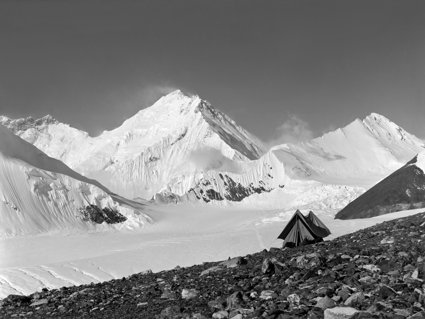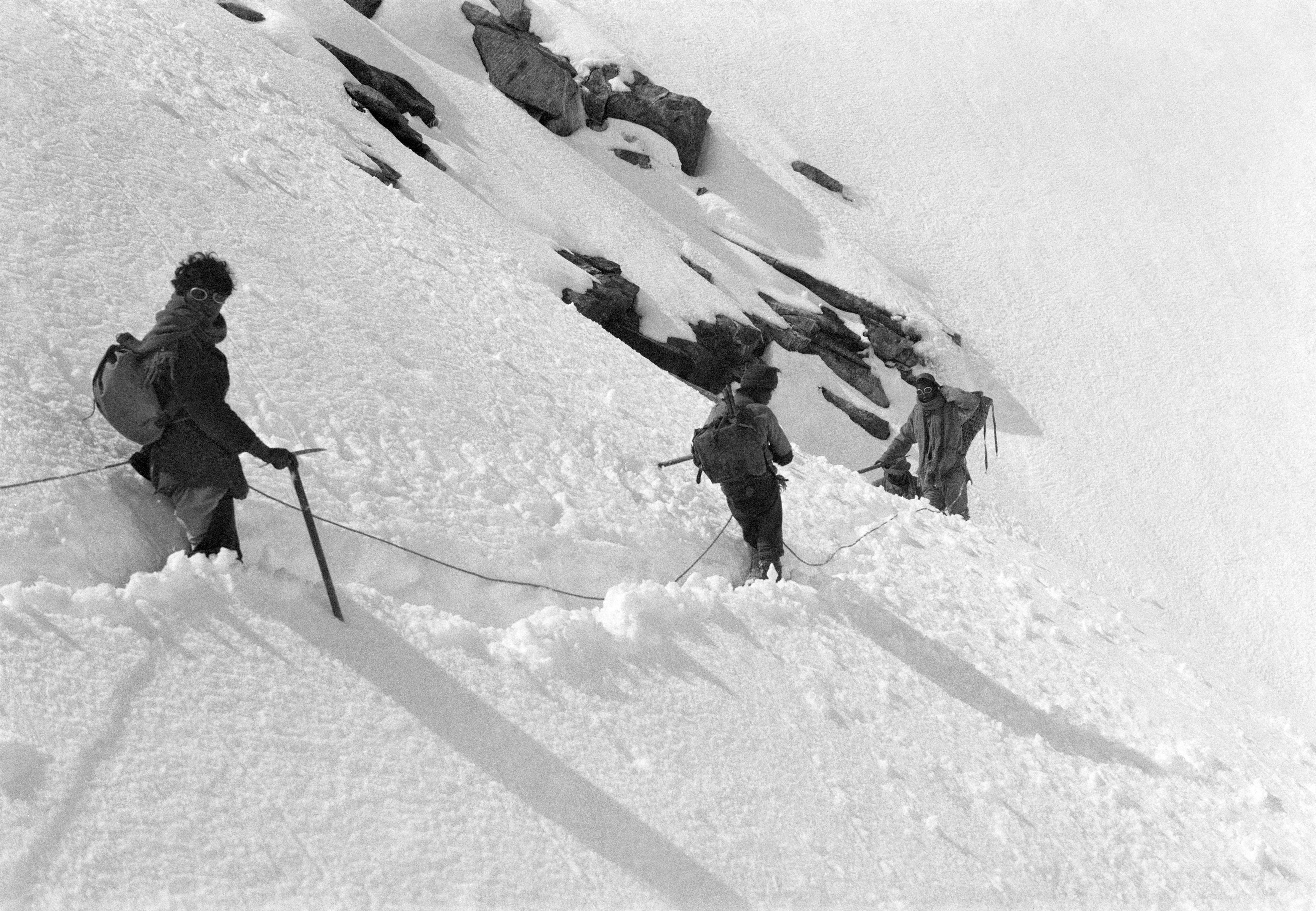
Everest 1921 limited edition platinum prints
A selection of limited edition platinum prints from the newly digitised negatives of the 1921 British Mount Everest Reconnaissance Expedition.
The Society has collaborated with the Salto Ulbeek studio in Belgium to create the first ever limited edition series of platinum prints from the 1921 Everest expedition, created from negatives in the Society’s Collections, including newly digitised fragile silver nitrate negatives, housed in specially controlled conditions for the Society by the British Film Institute.
These museum-grade prints are hand-made to order by the master printmaker Georges Charlier and his team at Salto-Ulbeek in Belgium. The digitisation and printing techniques of Salto-Ulbeek have opened up these exceptional photographs, providing greater clarity and breath-taking detail in every print.
"Mountain shapes are often fantastic seen through a mist: these were like the wildest creation of a dream…Gradually, very gradually, we saw the great mountain sides and glaciers and arêtes, now one fragment and now another through the floating rifts, until far higher in the sky than imagination had dared to suggest the white summit of Everest appeared."
George Mallory, from his account in the official publication of the expedition 'Mount Everest: the Reconnaissance, 1921', Edward Arnold & Co Ltd.
Taken by George Mallory, Charles Howard-Bury, Alexander Wollaston and Edward Oliver Wheeler with Abdul Jalil Khan, the photographs were originally intended to complement the purpose of the expedition – to carry out new and more detailed survey work in the region. However, the aesthetic quality of these images – among the first to document Everest – is remarkable. The selection also includes some of the finest panoramic photographs of any high mountain region ever taken.
Photographs of the Himalayas and Everest had been taken by earlier expeditions, making use of telephoto lenses – including striking images by John Noel, Dr A.M. Kellas, Douglas Freshfield and Vittorio Sella – but the high altitude images from the 1921 reconnaissance expedition were amongst the first of the mountain and surrounding landscape as viewed at close quarters.
Attempts to reach the summit of Everest were inspired by John Noel, a British Army captain, who had made it to within 40 miles of the mountain in 1913. In a paper submitted to the Society in 1919 about his Tibetan expedition, Noel was among the first to suggest that Mount Everest should be climbed. In 1921, the reconnaissance expedition, organised by the Mount Everest Committee was the first to actually set foot on Mount Everest, with Mallory and Bullock beginning to climb the slopes of the North Col, before being forced back, having successfully proved that a route to the summit of the mountain was possible to achieve. The photos subsequently taken by Mallory and the rest of the 1921 expedition team went on to aid and inform plans for future attempts to climb the mountain in 1922 and 1924.
"[The Expedition was] … admirably equipped for the acquirement of knowledge. But acquirement of knowledge was not the only object which the Expedition had in view. It could not be doubted that the region would possess beauty of exceptional grandeur. So it was hoped that the Expedition would discover, describe and reveal to us, by camera and pen, beauty no less valuable than knowledge."
Sir Francis Younghusband, President of the Royal Geographical Society, 1919-1922
Everest 1921 Platinum Print Brochure and Catalogue
Contact us
To make a private appointment to view a selection of the prints or for provenance and edition information please contact images@rgs.org
